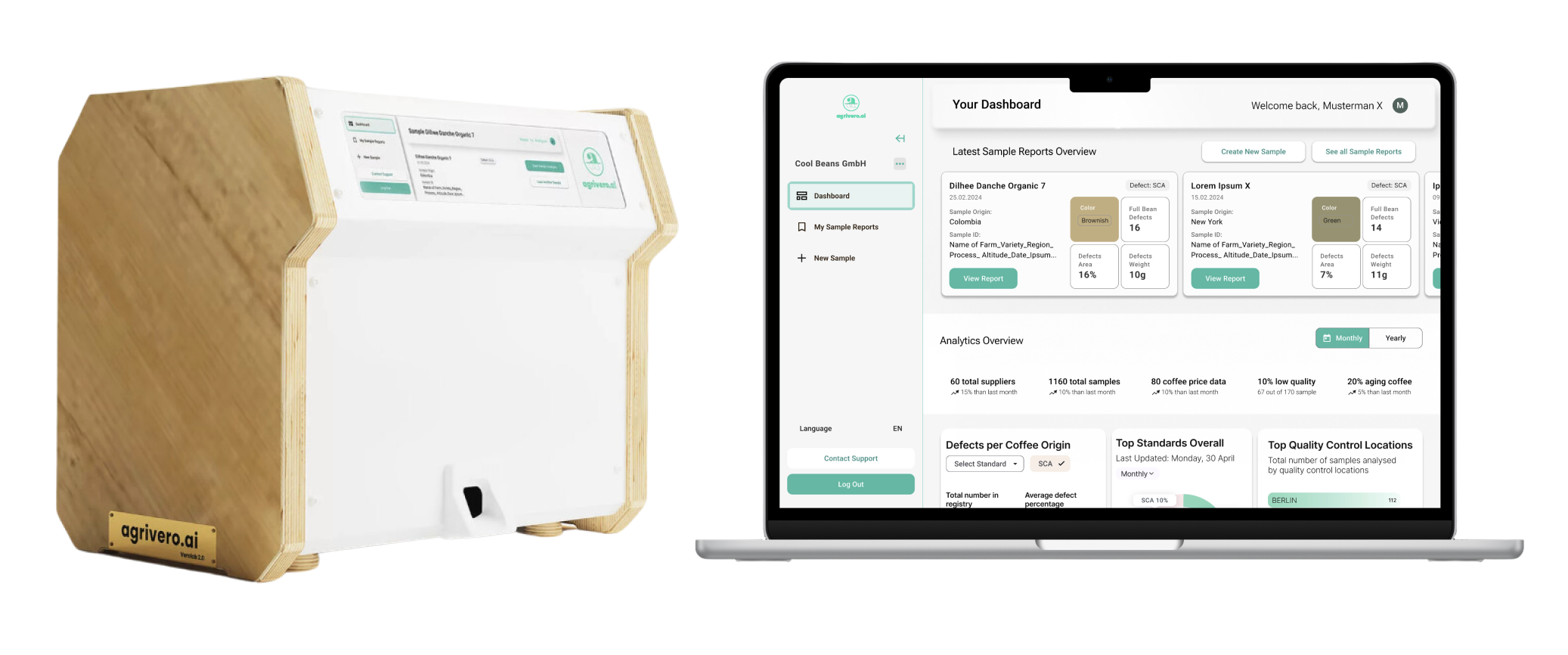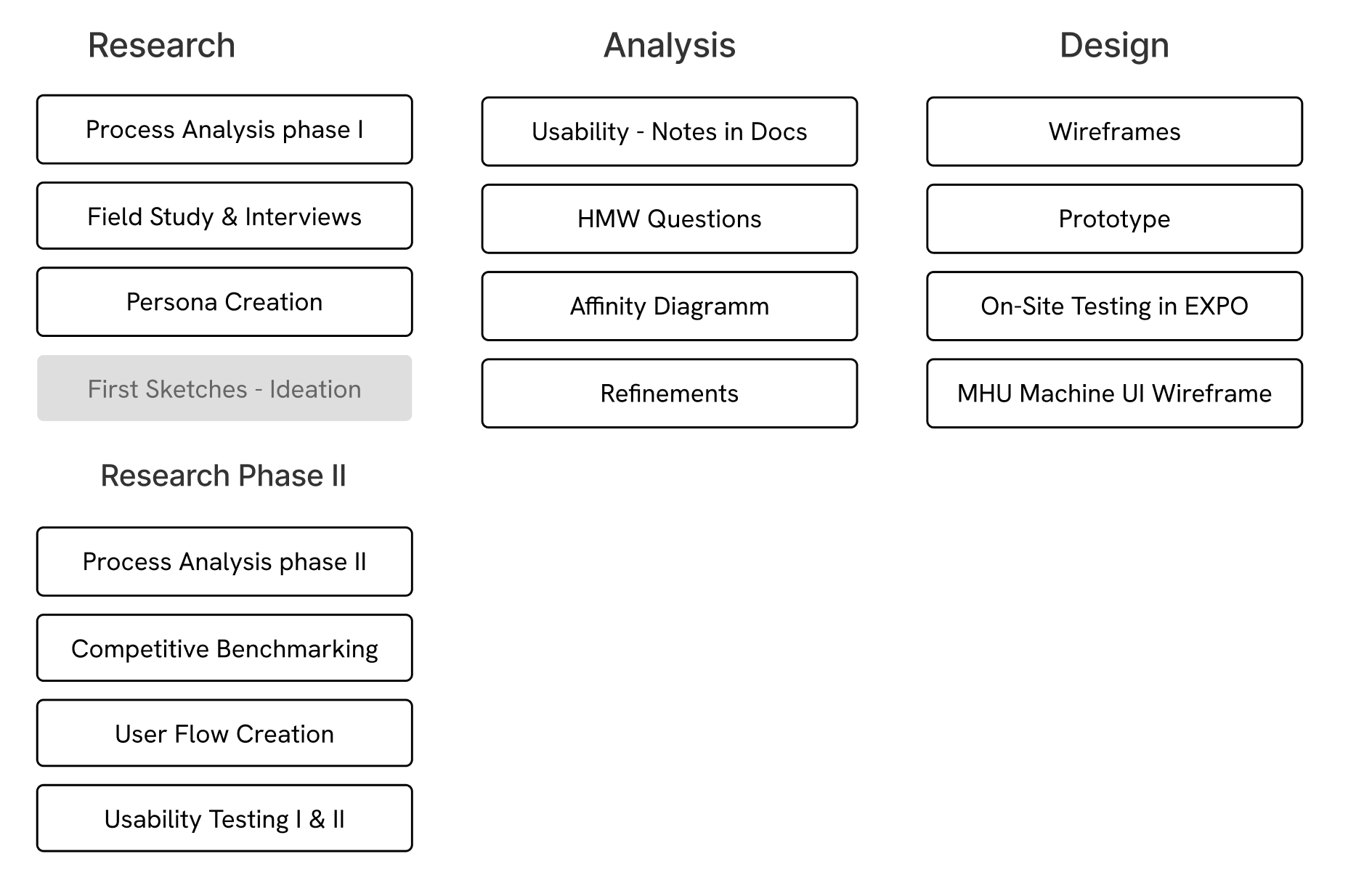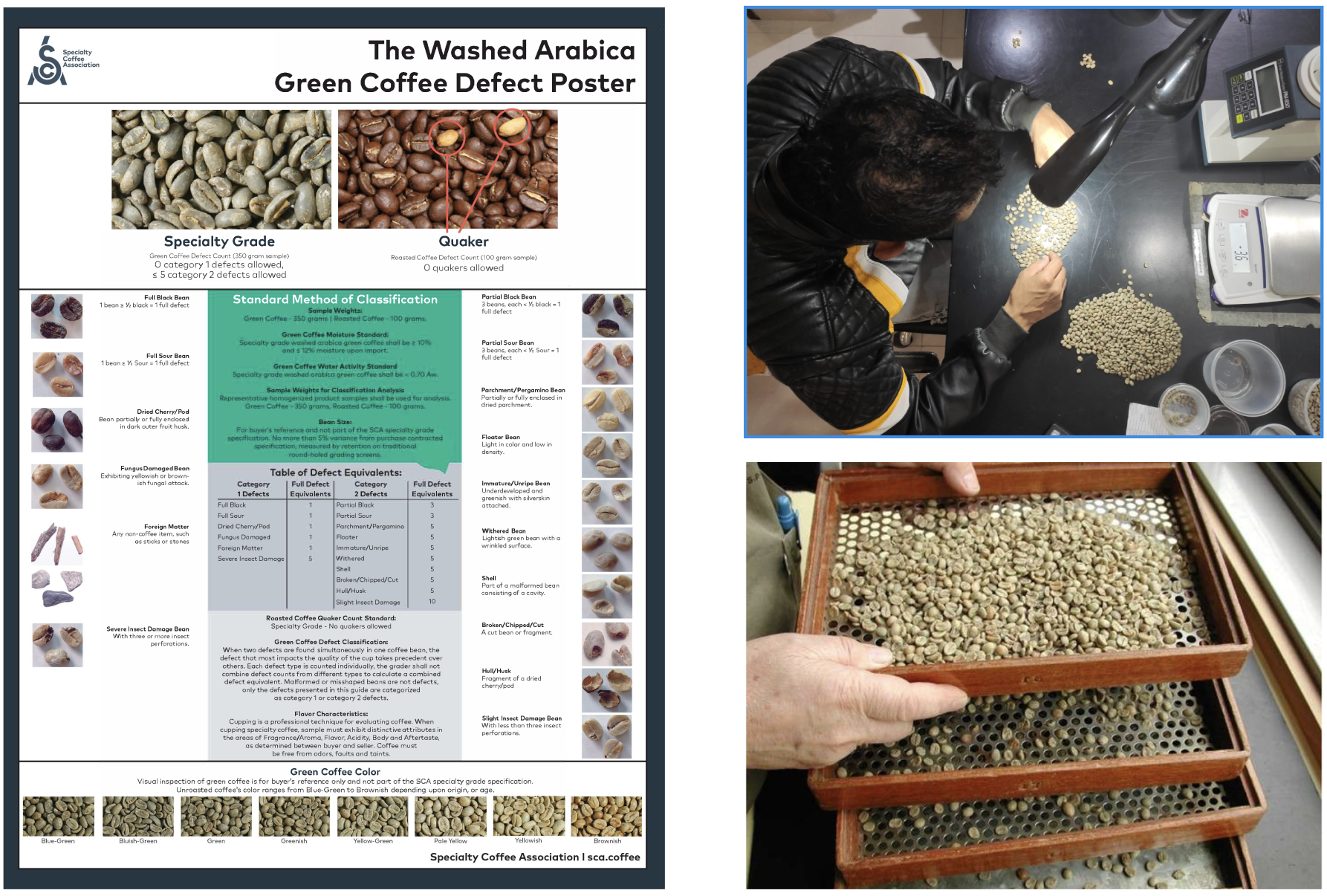Back
Start-Up UX Research & Design
Part II: Coffee Carbon Collective
Tools
UX Research:Figma,Google Meets,SurveyMonkey
UI/UX Design:Figma,Adobe Photoshop,Adobe InDesign
Agile-React Team:Slack,Github,Miro Board,Microsoft Teams,Zoom
The Team
Cansu Yener - Product Designer & Researcher & ReFi enthusiast
Darina Onoprienko - CEO Enterpreneur in coffee / AI / Web3 Lead
Lina Gundelwein - CTO + Team of Software Engineers
Agrivero.ai team is a part of Berlin Founders Fund, incubation program of Berlin Senate and European Fund for Social Development.
Part II: COFFEE CARBON COLLECTIVE
Berlin-based AI-powered platform revolutionizing green coffee quality control, traceability and market positioning. Designed to replace traditional manual grading methods, this product integrates advanced technology into a streamlined machine interface and web application, catering to farmers, roasters, and traders globally.
The Assignment
The design challenge revolved around creating an intuitive UI/UX for a coffee grading machine and a web application in a market lacking direct references. Initial research revealed that not all farmers owned smartphones but had laptops, leading to the decision to prioritize a web-based platform for the MVP.
Key challenges included:
- Defining the need: Understanding coffee grading processes & coffee grader expectations in results.
- Translating manual coffee grading processes into a digital workflow.
- Adapting the interface to accommodate diverse grading standards across regions.
- Addressing the unique needs of users like farmers, traders, sellers and roasters, with varying goals.
- Developing an interface for a non-traditional screen size.

Methodology

PHASE I - Ideation
Research
To create an intuitive and adaptable solution for Agrivero.ai, we implemented a comprehensive research methodology.
1.1. Process Analysis Phase I

1.2. Field Study & Interviews
Conducting fieldwork across Colombia, Costa Rica, Guatemala, and Brazil, interviewing farmers, graders, and roasters. Engaged with stakeholders at the “World of Coffee” event and ecosystem partners to identify pain points in grading, traceability, and reporting. In later phases, added more roasters from Germany and Turkey for further exploration and testing.

1.3. Buyer & User Persona Creation
Created detailed personas, such as farmers, graders, and traders, reflecting their workflows, priorities, and challenges. Highlighted the need for localized and customizable interfaces.
- Specialty: coffee businesses producing, trading and roasting high quality specialty coffee. These businesses are focused on evaluating cup profile (taste) instead of physical appearance of bean
- High commercial: coffee businesses producing, trading and roasting fair quality coffee and are focused on “clean cup” instead of an elaborate profile and they do care about physical defects. producers 5-50 samples a month, exporters / traders / importers - 450 samples a month per location,roasters 50-100 samples per month
- Low commercial: coffee businesses producing, trading and roasting low quality coffee have enormous emount of samples and need to reduce bottlenecks in the labs. 1700 samples a day.
Distinguishing between buyer & user persona
- Urgency of need
- Financial capability
- Tech readiness
- Scalability potential
Most Likely First Adopters of Agrivero (Buyers) Cooperatives & Dry Mill Owners (Elmer Restrepo, High-Commercial Buyers) - Immediate ROI & Bottleneck Relief
PHASE II
After onboarding new UX Designers & stakeholders, phase II began.

Design Timetable of Phase II
2. Research Phase II:
2.1. Process Analysis Phase II & Competitive Benchmarking:
- competitive benchmarking, although not enough free informaton, available in docs
- meetings with stakeholders
- watching youtube grading content
- talking with coffee roasters
- by reading coffee grading books
2.2. User Flow Creation
2.3. Low-Fid Wireframes
Ideated the initial screen for green coffee bean analysises. We had meetings with the CEO to go through the inital idea.
Testing Methodology
2.4. User Testing: Iteration I
- Participant Selection
Participants are stakeholders who are already working with the App.
2.5. User Testing: Iteration II
- After analyzing the results from the first testing iteration, further tests were conducted to refine the system.
- Participant Selection Participants were selected from CEO Darina's existing network of farmers, roasters, and traders who had already expressed interest in the product.
- Testing Scenarios
- Dashboard Testing: Evaluated the presentation of analytics and defect trends, with participants asked to interpret placeholders and suggest improvements.
- Sample Registration: Focused on the clarity of sample entry fields, workflows, and the adaptability of fields for regional or custom grading standards.
- Results Page: Assessed the prioritization of information, visual clarity, and usability of downloadable reports.
Analysis
3.1. Notes in Doc
- Notes & Screens: Documented insights, transferred to Post-its, and annotated screens during stakeholder meetings.
3.2. HMW Approach
- HMW Approach: Merged screen notes & Post-its to define key HMW questions.
3.3. Affinity Diagram
- Created Affinity Diagrams based on the interview notes.
3.4. Refinement
- Screen Discussions: Reviewed and annotated screens during meetings to explore possible changes.
- Refinement: Optimized navigation & structure based on direct feedback. And re-created screens for a second round of user testing.
3.4.1. Analysis Outcomes
- Standard Adaptation: Emphasized integrating regional variations and custom standards.
- Data Visualization: Identified a strong need for graphical reports to improve decision-making.
- Workflow Simplification: Users preferred workflows mimicking manual grading to reduce complexity. Tangible to Intangible design.
Design
4.1. Wireframes
- Created Wireframes based on all the research & analysis
4.2. Prototype
- Created Prototype that is to be tested on site on Coffee EXPO in Chicago
4.3. MHU Machine UI
- Machine UI is simply a simplified version of the webpage.
Designing innovative solutions for next-gen devices and inventions.
cansufarahy@gmail.com
(152) 560-79-264
© 2025 Cansu Yener
